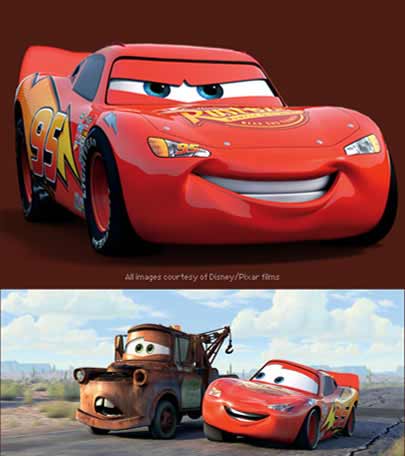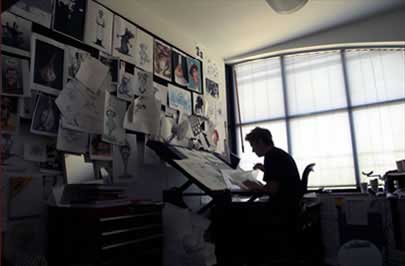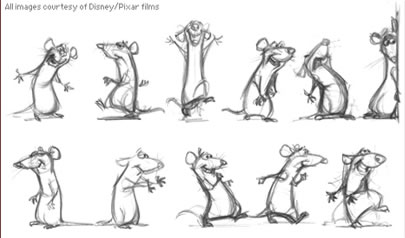Motion Capture Animation
Using Performance Capture or Motion Capture Technology to Enable Lifelike 3D Animation – Is it Acting or Animation?
With movies like James Cameron's Avatar pushing new boundaries of 3D animation, the concept of "performance capture" has come to the fore, addressing perhaps for the first time the issue of how to truly merge acting with animation. Unlike previous movies using motion capture technology, where facial movements still needed to be added in post-production by animators, performance capture allows every facial movement and nuance expressed by the actors to be conveyed by their virtual 3D selves.
Nothing is added in terms of facial movements in post-production, so actors are expected to emote fully on camera before the data is exported to their digital selves. The only additional animated movement required is for body parts that may not exist in reality, like tails on the Na'vi. And of course the animation of all the other fantasy creatures, worlds, textures, clothing and 'make-up' required by the story.
Actors themselves have struggled to some extent as to whether these fully or partially animated movies are really "acting" but there is no doubt in the minds of director Cameron and his cast that their acting skills are truly represented on the big screen in the form of the ten foot tall blue Na'vi.
With this level of innovation, the boundaries have been forever blurred between traditional animation, computerized 3D animation, high level special effects makeup and traditional movie making. For the actors, being able to replace hours in the make-up room having detailed makeup and expensive prosthetics applied on a daily basis, with live action footage in simulated green screen environments has got to be a huge step forward. And with the proliferation of screen actors taking key voice roles in animated movies in recent years, most acknowledge that 21st movie making is no longer all about the pretty face or perfect body.
James Cameron has been quoted as saying "I do think that there is an issue here where the acting community needs to be educated about what performance-capture really is, especially the way we did it on 'Avatar,' where we preserved every nuance of the performance."
Cameron has been working on the 'Battle Angel' project to make a live-action adaptation of the first three volumes of the manga series. Like Avatar, the movie will be a combination of live action and CG, with a female actor playing the lead character Alita and using the same performance capture technologies.
Director Robert Zemeckis also used performance capture for his movie Beowulf, starting Ray Winstone. Winstone makes the point perfectly that this technology is really just a post production version of hair and make-up. "What Ray Winstone said is the difference between this and live action is that in live action, you go into hair and makeup, you go into wardrobe, and then you act," says Beowulf producer Steve Starkey. "In this, you act, and then they put on your hair and makeup. There is no difference. You're acting in both, and I say it should be considered as a real performance."
Giant Studios
The creators of the proprietary performance capture technology used by Cameron for Avatar are LA based Giant Studios. Giant's proprietary technology is based upon advanced tracking and analysis algorithms, with a sophisticated suite of software tools that enable 3D animators to create high quality character animation faster and more easily than ever before. Giant's technology consists of hundreds of thousands of lines of code that define the human skeleton with scientifically accurate detail: bone length, density, connectivity, and rotation properties. All of which can be modified to mirror the appropriate skeletal set-up for any mechanism that needs to be animated.
With Giant Studios' technology, the result is organic, accurate animation of each character on screen. Due to the scientific accurate detail within the software, Giant defines specific bone lengths and motion parameters of each character skeleton being captured.
Because the software is robust enough to enable capture and processing of the motion data of multiple characters in one simultaneous process, the director can see in real time the live performance of the animated character, in a digital version of the set, with interactive camera and lighting controls. The director and producer walk away from the capture session knowing that they have the performances and the shots they need, avoiding expensive reshoots.
Motion tracking or motion capture started as a photogrammetric analysis tool in biomechanics research in the 1970s and 1980s, and expanded into education, training, sports and recently computer animation for television, cinema, and video games as the technology matured.
For anyone seeking a career in movie animation, becoming familiar with this rapidly evolving technology and understanding what part it has to play in moviemaking going forward, will be critical to your success.
Article written by Natcoll Design Technology,


